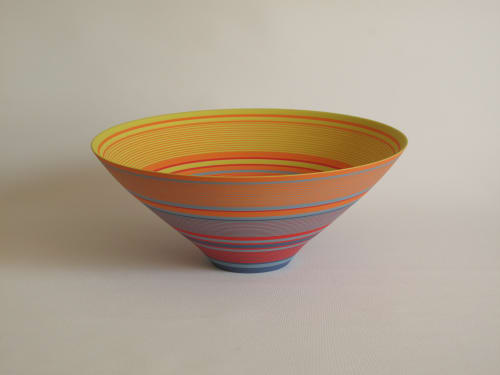Sara Moorhouse
-
 R1. Small Saturn Sphere Sold
R1. Small Saturn Sphere Sold -
 R3. Medium Saturn Sphere£350.00
R3. Medium Saturn Sphere£350.00 -
 82. Petite ice blue winter£215.00
82. Petite ice blue winter£215.00 -
 33. Tall Angular Arable Landscape: Red Form£850.00
33. Tall Angular Arable Landscape: Red Form£850.00 -
 4. Petite Conical Loop Form £195.00
4. Petite Conical Loop Form £195.00 -
 2. Petite Conical Loop Form£195.00
2. Petite Conical Loop Form£195.00 -
 5. Petite Conical Loop Form £195.00
5. Petite Conical Loop Form £195.00 -
 6. Petite Conical Loop Form £195.00
6. Petite Conical Loop Form £195.00 -
 8. Small Conical Loop Form£295.00
8. Small Conical Loop Form£295.00 -
 13. Petite Saturn Form£185.00
13. Petite Saturn Form£185.00 -
 21. Small Conical Saturn Form £295.00
21. Small Conical Saturn Form £295.00 -
 M4. Large Tall Angular Arable Landscape £850.00
M4. Large Tall Angular Arable Landscape £850.00 -
 15. Petite Saturn Form£185.00
15. Petite Saturn Form£185.00 -
 26. Medium Angular Saturn Form£595.00
26. Medium Angular Saturn Form£595.00 -
 25. Small Angular Saturn Form£350.00
25. Small Angular Saturn Form£350.00 -
 23. Small Conical Saturn Form£295.00
23. Small Conical Saturn Form£295.00 -
 27. Medium Angular Saturn Form£595.00
27. Medium Angular Saturn Form£595.00 -
 M14. Petite colourfield bowl, red exterior£125.00
M14. Petite colourfield bowl, red exterior£125.00 -
 10. Wide-rim Medium Loop Form£450.00
10. Wide-rim Medium Loop Form£450.00 -
 M8. Medium Angular Saturn£450.00
M8. Medium Angular Saturn£450.00 -
 58. Small Porcelain Bowl£285.00
58. Small Porcelain Bowl£285.00 -
 M25. Coloured Light Bowl£275.00
M25. Coloured Light Bowl£275.00 -
 M30. Coloured Light Bowl£275.00
M30. Coloured Light Bowl£275.00 -
 M26. Coloured Light Bowl£170.00
M26. Coloured Light Bowl£170.00 -
 SM21. Small orange and blue bowl grey interior£250.00
SM21. Small orange and blue bowl grey interior£250.00
The development of my work into ceramics, colour and spatial perception began with a Masters degree at Cardiff in 2003. The work explores the ways in which spaces within landscape appear altered depending on the ever-changing colours of season, weather, time and farming. The bowls act as a canvas for paintings that distil specific landscape scenes, perceptibly altering the size, depth and shape of the form by the applied colour. The forms can be made to seem wider or narrower, deeper or shallower, heavier or lighter, or they may appear to undulate, bend, move or hover by the juxtaposition of finer lines. The viewing of both inner and outer surfaces together enables me to exploit colour connections and visual play from one side to another, emphasising or flattening the dimensionality of the form.
Notions above were the topic of 18 months studio practice before embarking on a PhD in March 2006. This was undertaken to develop the ideas with more emphasis upon the spatial phenomena in relation to colour theory.
As part of the research-based practice I returned to the basics of colour theory and tested out ideas on the three-dimensional conical form. I found that colours behave differently when viewed across three-dimensional space than on a two-dimensional surface, particularly on the inner bowl form where illusions can appear much stronger. The illusory spatial colour phenomena were then used on forms to suggest specific landscape scenes, such as Table Mountain in South Wales and The Rigi in Switzerland, as colour arrangements allude to spaces and atmospheres found therein.
The research has enabled me to develop a vocabulary of spatial colour knowledge specific to the three-dimensional bowl form, in which I have learnt to manipulate and articulate three-dimensional space to a much greater effect. After a long awaited continuation of my studio practice, I am now integrating the findings from my PhD with colourways and arrangements from my previous practice, for which my intuitive response to landscape scenes, colour and form, remain key objectives for my practice.
- Sara Moorhouse

























